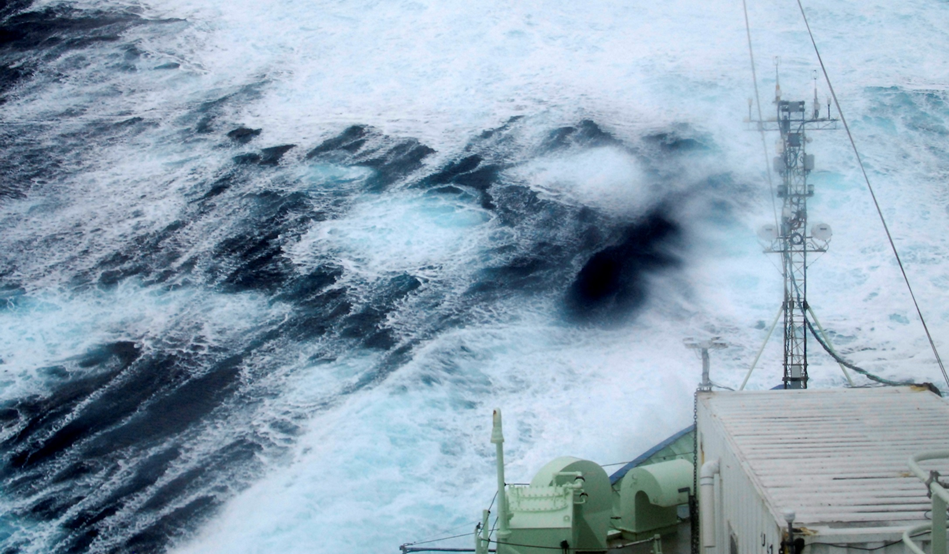Whitecaps
Whitecaps are the surface signature of air-entraining breaking waves consisting of subsurface bubble clouds and surface foam patches. Easly detectable from ship and airborne visible imagery, the whitecap coverage serves as a proxy for wave breaking related processes. Whitecaps have been studied extensively since the late 1960s because of the role of wave-breaking in the air-sea exchange of gases, and the production of sea spray aerosols.

As wave breaking mainly depends on wind, the whitecap coverage has traditionally been parameterized as a non-linear function of wind speed. However, historical “wind-speed-only” parameterizations exhibit several orders of magnitude scatter. This scatter is thought to be largely due to varying sea state conditions.
Using the visible imagery collected during the So GasEx and HiWinGS experiments along with wave field and flux measurements, I investigated the dependence of the whitecap coverage on wind speed, wave age, wave steepness, mean square slope, and wave-wind and breaking Reynolds numbers.